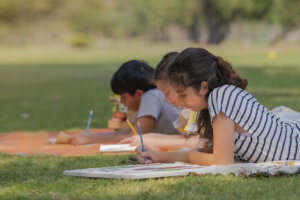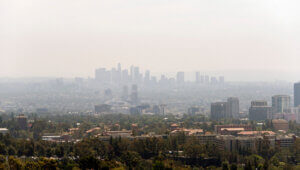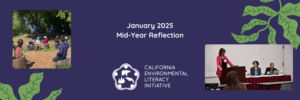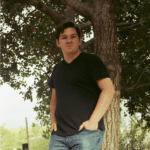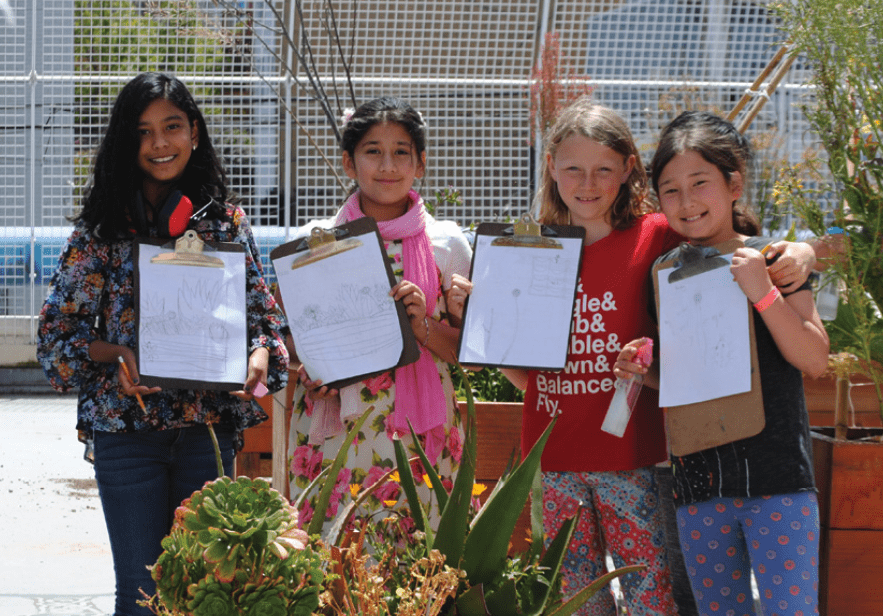Seth Whiteaker is a student whose lifelong experiences in nature have fostered a love for native gardening. After founding a Gardening Club at his school, he’s organized a coalition of other student groups to promote sustainability on campus. We spoke with Seth about the role of community in environmental action, the importance of education in promoting student leadership, and the interconnectedness of social and environmental issues.
Note: This Q&A has been excerpted and abridged from the video interview below.
Describe your work leading environmental action in your community. How did you get involved and how has your experience grown over time?
I’ve been really connected with nature from a young age, but my personal experience in environmental activism probably started in fifth grade. I went to a Waldorf Charter School and we won the Green Ribbon Award. A lot of that was through my family working in the gardens on campus. My first exposure to environmental work was through that gardening, first on the food side but then moving into stuff like native gardening.
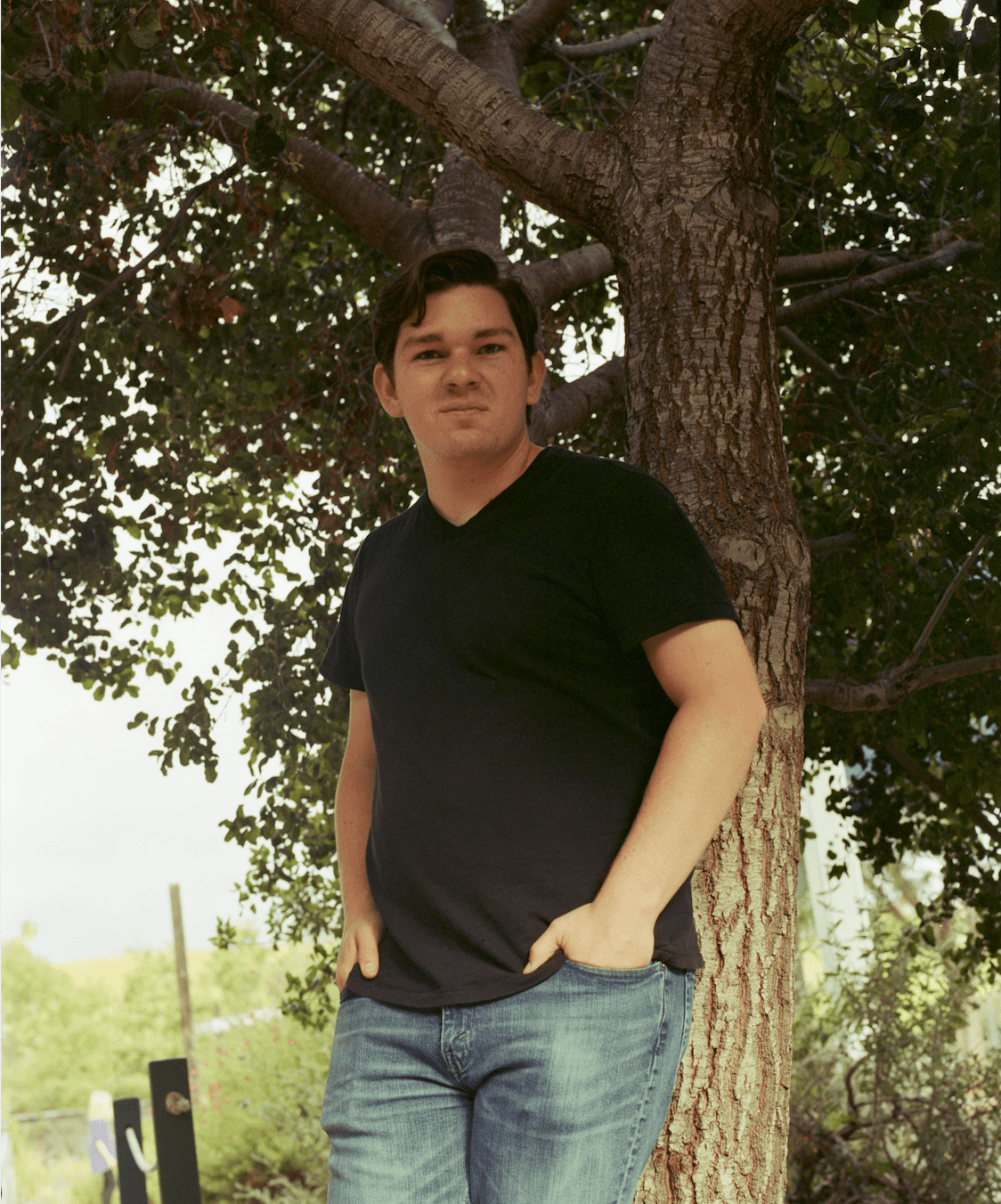
At my high school, two years ago, I started a gardening club where we took over the 55-by-85-square-foot native garden on campus. It’s been a super cool opportunity. Over the past two years, some other clubs have joined the gardening club, like Eco Club, Science Club and Green Team. We call it the “Ecollective,” and we’ve been pushing for a lot of campus-wide sustainability efforts, including the native garden and other gardens for the culinary program. We’ve been working on a hydroponic system, and since the Green Team manages all of the paper recycling on campus, there are a couple other projects that we’ve been talking with them about too.
It’s definitely all about community. The school hasn’t given us any funds for these projects, so a big part of our fundraisers have been what we call “garden parties.” I play a couple of instruments and so do a lot of other people in the club, so we’ll throw these garden party fundraisers where, for an entrance fee of five bucks, we’ll provide music, live music and karaoke and free food. Then we’ve been using that to fundraise. So it builds a connection between everyone who’s coming to the fundraiser and the space.
Why is this issue important to you?
I’ve been around gardens my whole life, and as I grow into this work, I’ve realized how much it intersects so many other issues.
If you’re talking about gardening and environmental justice, you’re also probably going to talk about agriculture, food justice, water issues, Indigenous rights, institutionalized racism and public health issues. All of these different systems are so deeply connected that you can make a big change in a lot of different places by starting in one small corner, like food justice or gardening.
What is one of the biggest lessons you’ve learned through your environmental work?
Community focus has been one of the biggest things I’ve learned. You don’t realize how much you need other people for this work until you’re right in the middle of it. Because building community is so important, it needs to be fun for people. A lot of times in the activist community, things feel really dire and so you feel like you need to be fighting all the time. So if you want to build a movement and include as many people as you can, you need to make it something people look forward to.
What role do you think education plays in shaping young people to become leaders on climate and social issues?
It all starts with education, both formal and informal. There’s so much that needs to be done within the public and private school systems, in terms of teaching about issues and considering different viewpoints. There’s also much to be said for learning from community organizations, different clubs, and learning from each other too. Learning from activists and teachers and gardeners, for example, who are actually working on the ground is super valuable.
What advice would you give adults based on your environmental leadership experiences?
One is that it’s a dialogue and both sides need to listen. I’ve seen a lot of adults think that the best way to connect with youth is through electronic means, which obviously right now is one of the only ways to connect. But I would say that most youth who are interested in environmental work actually prefer a hands-on way of engaging, rather than a new app or something. A lot of people across the generational gaps feel that more electronic communication is the way to go where I think that probably the opposite is actually true.
I think that ties into the education part, too. Like a lot of other schools, we have a community service requirement to graduate, and a lot of those opportunities are off-campus and not during school hours. So especially for students who work or don’t drive, it’s really hard to get to those opportunities. That’s part of why we started the gardens on-campus: to try to make a place on campus where people can engage and learn without it running into their outside time.
Transitioning to a more sustainable society means building an inclusive movement. What are your thoughts on how to create a more equitable and inclusive environmental movement?
I think a lot of that ties into education, again. If you start teaching about the challenges and interconnectedness of these issues early on, in elementary school or middle school, I’ve seen more people want to balance environmental justice and social justice more. They’re not really that separate. The people who are most impacted by climate change and by any number of other environmental issues are going to be BIPOC and people with disabilities.
Are there any other messages you’d like to leave us with?
The power of building community is something that I think a lot of people underestimate because in activism, we want to solve issues as quickly as we can, but it’s important to lay the groundwork before you can make any meaningful and long-lasting change.
Read more about how California youth are leading the movement for environmental action here.


